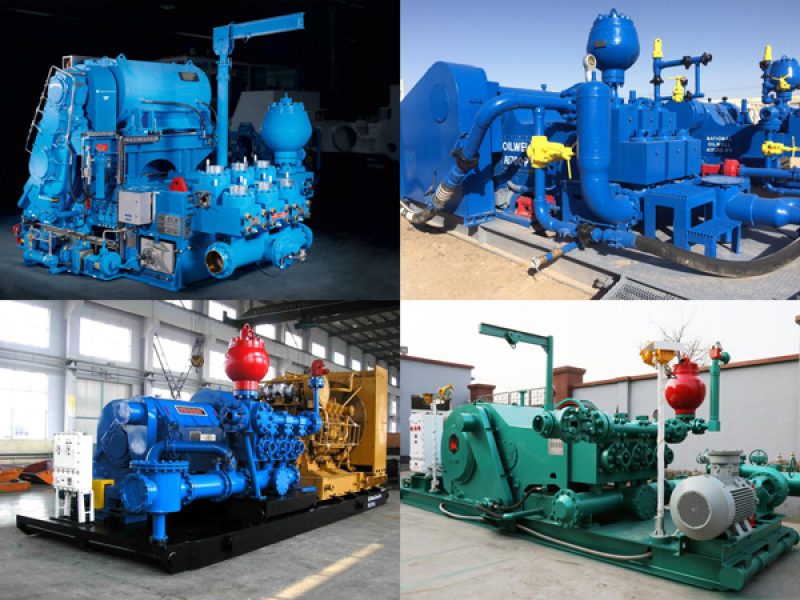
The heart of the drilling mud rotation system is the Mud Pump. Most drilling rigs are equipped with two mud pumps, one of which is always in operation and the other is used as a replacement or backup pump. Sometimes both pumps can be used simultaneously and a large volume of drilling mud can be circulated in the system. When drilling deep wells, the drilling rig may use 3 or 4 pumps. The Rig uses either Duplex pumps or triplex pumps.
Types of Drilling Mud Pump:
- BOMCO/Emsco Mud Pumps: F-1300, F-1600, FB1300, FB1600, F-800, F-1000, F-500, F-350
- Ideco Mud Pumps: T-500, T-800, T-1000, T-1300, T-1600,
- National Mud Pumps: 12P160, N1300,14-P-200, 14-P-220,
- Gardner Denver Mud Pumps: PZ7, PZ8/9, PZ10/11,
- Oilwell Mud Pumps: A-560/600-PT, A-850-PT/A-1100-PT, A-1700-PT/A -1400-PT
- Ellis Williams: E-447, E-2200
Duplex mud pumps
the Duplex pump, the piston pumps the fluid on one side toward the outlet and at the same time draws the fluid inward on the other side of the piston.
As the piston moves forward, it pumps the fluid outward on one side and the fluid is drawn in on the other side of the piston. Therefore, Duplex pumps are two-stage.
Two-stage pumps, pump more fluid per reciprocating piston than single-stage pumps. However, because these pumps are two-stage, they have a seal around the piston rod, which prevents Duplex pumps from moving faster than triplex pumps.
The input horsepower range for Duplex pumps is from 190 to 1790. The maximum output pressure for dual pumps is around 5000 psi.
Triplex mud pumps
The triplex pump has three pistons that move back and forth in the ester.
Triplex pumps weight 30% less than Duplex pumps and are easier to transport and install when parts weight less.
Other advantages of triplex pumps over Duplex pumps include;
They have lower operating costs.
The end of the pump is easier to access.
The pump output of the pump has less turbulence, meaning that the pump output does not produce as many waves as the Duplex pump.
Large amounts of drilling fluid are pumped at high pressure.
Today, high pressures are required for drilling deep wells. For the reasons mentioned above, triplex pumps have gradually phased out dual pumps.
In a triplex pump, the pistons direct the drilling fluid to the outlet only when they move forward in the ester. As a result, as they move backwards, they draw in the drilling fluid on the same side of the piston. This is why triplex pumps are called single-stage.
